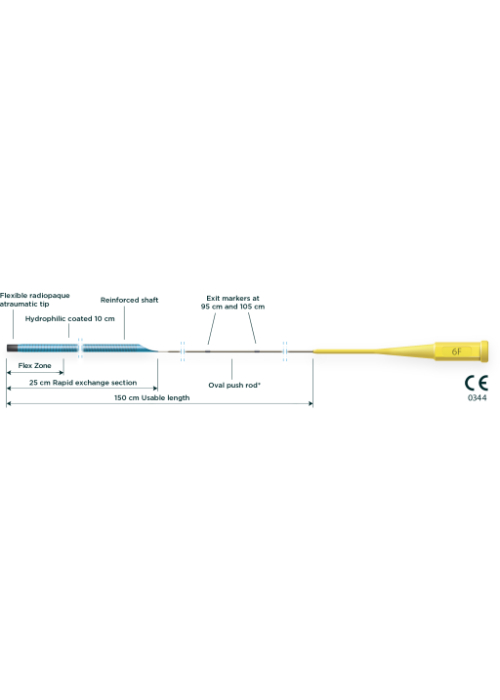RAPID EXCHANGE GUIDE EXTENSION
The Guidion Rapid Exchange Guide Extension has a hub, a proximal wire shaft and distal tubing. The distal tubing is re-enforced with braiding and ends in an integrated soft distal end to facilitate advancement of the device through a guiding catheter and into the main coronary vessels. In addition the outer surface of the distal end of the distal tubing is provided with a hydrophilic coating. To aid in the placement the Guidion has a radiopaque distal end that is visible with fluoroscopy. The Guidion has two depth markings located at 95 cm and 105 cm from the distal tip to indicate that the distal tip of the catheter is at the level of the distal tip of the guiding catheter.
REQUEST A QUOTEThe Guidion will be used in guiding catheters of 90 and 100 cm length, supplied with accessories and will be able to extend maximal 15 cm from a guiding catheter.
Significant Improvement in Backup Support
Selective Contrast Injections The Guidion is intended to be used in conjunction with guide catheters to access discrete regions of the coronary and/or peripheral vasculature, and to facilitate placement and exchange of guide wires and other interventional devices.
The Guidion Rapid Exchange Guide Extension is meant to extend from the guiding catheter and to be positioned more deeply into the proximal parts of the coronary arteries providing a reactive force in opposite direction as the forces created by maneuvering a device in the coronary artery.

